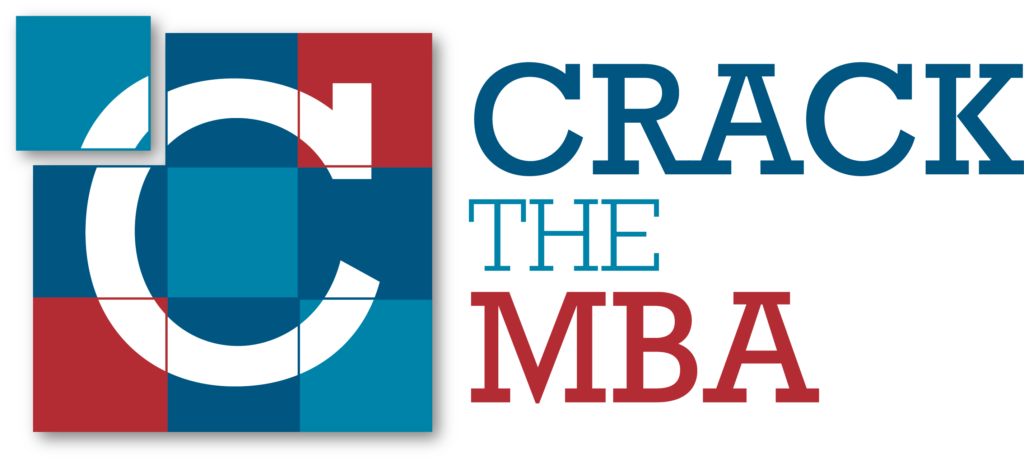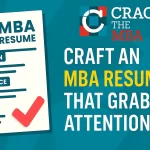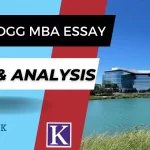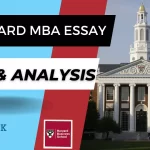Mastering the MBA Video Essay: 11 Expert Tips That Work
In the competitive world of MBA admissions, video essays have emerged as a powerful way for business schools to evaluate applicants beyond test scores and resumes. Today, top MBA programs like Kellogg, MIT Sloan, INSEAD, Yale SOM, Rotman, and London Business School include video essay components as part of their admissions process. These schools use MBA video essays to assess your communication skills, presence, and ability to think on your feet, traits that are crucial for success in business school and leadership roles.
Unlike traditional essays, video responses are often timed, unscripted, and designed to bring out your authentic personality. Whether you’re introducing yourself to your future classmates, reflecting on a challenge, or discussing your post-MBA goals, how you deliver your message is just as important as what you say.
In this guide, we’ll walk you through how to prepare for MBA video essays, share proven MBA video essay tips, and offer examples of what schools are looking for. If you’re applying to a top MBA program, understanding the video essay format and how to stand out in it can give your application a significant edge.

What are video essays, why do they matter, and how can I create a video essay that will create a positive impact in the minds of admissions officers? We will answer these questions and more in this blog post.
- Why do MBA video essays exist?
- What are MBA Video Essay and Interview Questions?
- Types of MBA video essays
- MBA Video Essay Questions of Business Schools
- Kellogg MBA Video Essays
- Rotman MBA Video Essay
- MIT Sloan MBA Video Essays
- Yale SOM MBA Video Essay
- London Business School MBA Video Essay
- Georgetown McDonough MBA Video Essay
- Rice Jones MBA Video Essay
- INSEAD MBA Video Interview
- 11 MBA Video Essay Tips That Work
- Final Thoughts
Why do MBA video essays exist?
Video is all around us these days. We watch videos on our smartphones, computers, and TVs. It’s hardly shocking that many MBA programs need video essays as part of the application. Why? Because video can transmit a lot of information quickly, including nonverbal communication that just isn’t possible in a written essay.
According to the Rotman School of Management at the University of Toronto, which was the first to use video essays as part of the application process, the video essay lets the admissions team look for different skills and abilities as part of the evaluation process.
INSEAD’s admissions committee says that the video essay gives students a unique chance to talk about what they love, what drives them, and who they are. The Admissions Committee wants to get a true picture of the applicant as a person. They want to know how a student thinks on his or her feet and how he or she communicates ideas.
What are MBA Video Essay and Interview Questions?
Both the MBA video interview and the MBA video essay are brief, self-recorded, or platform-recorded videos in which applicants respond to questions posed by the admissions committee via video rather than in written form. Some business schools have only recently added this criterion to their application process. It’s important to note that video essays don’t replace the written MBA admission essay or the final interview for admission.
It’s also important to know that business schools have different names for this essay because it’s new to the MBA application process. Kellogg and London Business School both call it a video essay, while INSEAD and MIT call it a video interview and a video statement, respectively. Every business school has certain unique nuances to video essays.
So, what types of video essays exist? Let’s find out.
Types of MBA video essays
There are two types of video essays asked:
- Impromptu Video Essays
- Pre-recorded Video essays
Impromptu MBA video essays
In this approach, applicants answer interview questions and record a video on the spot. Candidates generally have 30 to 60 seconds to prepare replies and 60 to 90 seconds to record video essays. The time limit may vary from school to school, but the format essentially remains the same, depending on the school’s admissions policies. In this setting, applicants are not given a second chance to answer questions, therefore, it’s important to be well-prepared.
Pre-recorded MBA video essays
In this format, candidates are asked to record a short video answering a specific question or prompt from the admissions committee. The time limit and questions or topics are usually given to you ahead of time, giving you more time to think about your answers and make sure your video essay is the best it can be.
So, which business schools ask for a video essay, and what are their specific guidelines? Let’s understand these in the next section.
Do you want to get into top business schools?
At Crack The MBA, we have helped hundreds of students get into top MBA programs around the world. We would be happy to help you too. Get in touch with us to learn more about our MBA application services.
MBA Video Essay Questions of Business Schools
🎥 MBA Video Essay Prompts by School
| Business School | # of Questions | Format | Common Themes & Tips |
|---|---|---|---|
| Kellogg (Northwestern) | 3 | Timed, recorded in one sitting | Introduction, career goals, challenges. Be concise, authentic, and confident. |
| MIT Sloan | 2 | 1 pre-set + 1 randomized | Classmate intro + a random behavioral question. Conversational tone works best. |
| Georgetown McDonough | 1 | 1-minute unscripted video | Share what recently brought you joy outside work. Be relaxed and personable. |
| INSEAD | 3 | 45s prep, 60s response each (post-app) | Leadership, values, cultural exposure. Show poise, self-awareness, and global fit. |
| Rotman (Toronto) | 2 video + 1 written | Kira Talent post-app | Communication, values, thinking under pressure. Show clarity and character. |
| Yale SOM | 3 | 20–30s prep, 60–90s answers | Behavioral depth, goals, and fit with Yale. Stay structured and sincere. |
| LBS | 1 | Randomized, post-app | Global outlook, challenge, or personality. Be specific and confident. |
| Rice Jones | Optional | 1–3 min video OR 500-word essay | Tell the story of a meaningful photo. Showcase creativity and depth. |
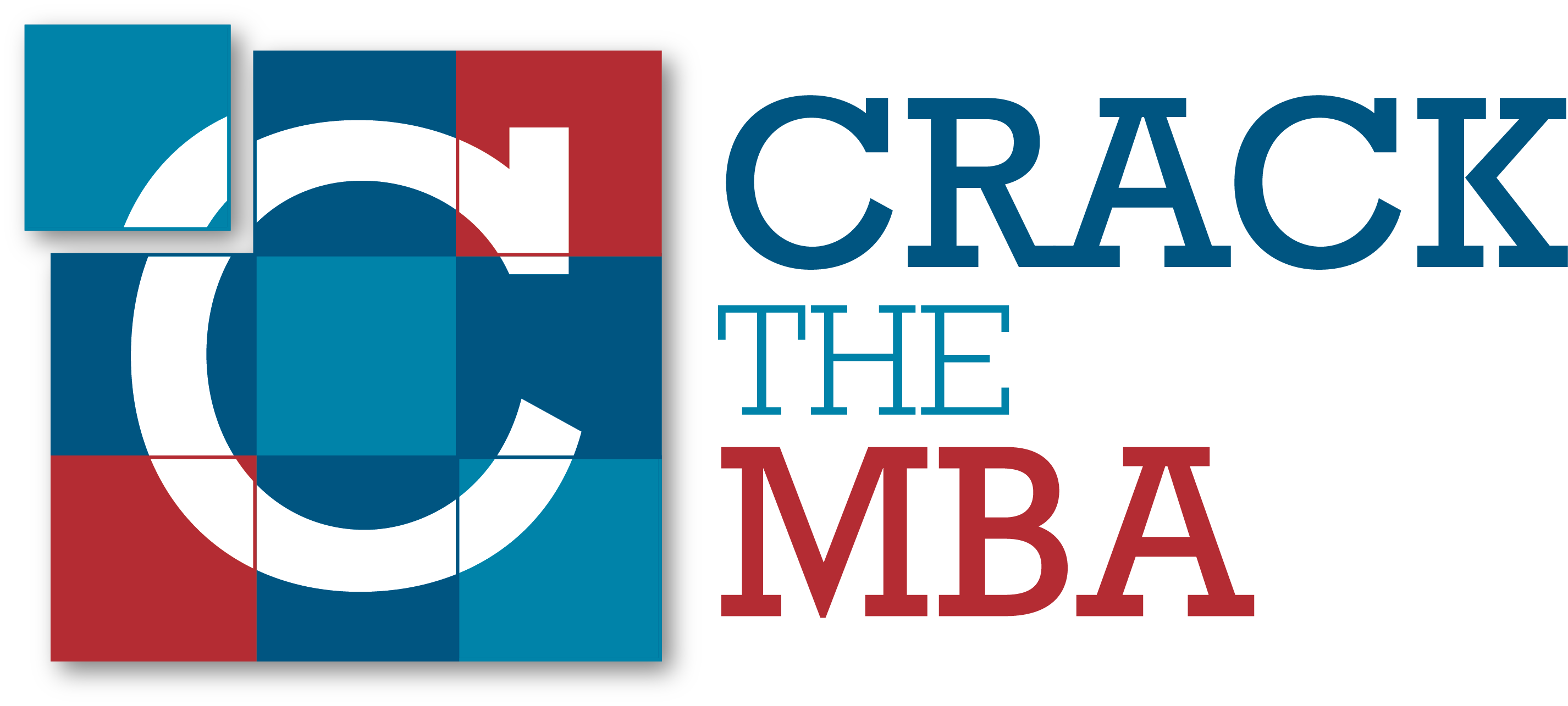
Kellogg MBA Video Essays
When and Where
- When: You will complete the video essays after submitting your Kellogg MBA application and paying the application fee.
- Deadline: The video essays must be completed within 96 hours (4 days) after the application deadline.
- Platform: You will receive a personalized link to complete the video through Kira Talent, an online video interview platform.
Structure of the Kellogg Video Essays
You’ll be required to respond to three video essay questions, each serving a different purpose. The essay prompts are not known beforehand, but they would resemble as follows:
- Introductory Question
“Please introduce yourself to the admissions committee.”
This is an opportunity to highlight your personality, background, and what excites you — a chance to go beyond what’s written in your resume. - Career Goals and Kellogg Fit
“What path are you interested in pursuing, how will you get there, and why is this program right for you?”
This question focuses on your short- and long-term career goals and why Kellogg is the right place to help you achieve them. - Behavioral or Challenge-Based Question
“This question will be based on a challenge you’ve faced and what you’ve learned from it.”
This is a test of your self-awareness, reflection, and growth mindset. Use a structured format like STAR (Situation, Task, Action, Result) to frame your response.
Timing and Format
- You will have approximately 20–30 seconds to prepare for each question.
- You will then have 60–90 seconds to record your answer.
- Each response is recorded in one take. There are no redos.
- You can complete the videos from any location, but make sure to:
- Choose a quiet, distraction-free setting
- Use a well-lit space with a neutral background
- Use a desktop or laptop with a reliable webcam and microphone
- Dress in smart casual or business casual attire
Kellogg’s Purpose for Video Essays
Kellogg uses video essays to assess several dimensions:
- Communication and presence: Can you clearly and confidently present your ideas?
- Fit with Kellogg’s culture: Are you collaborative, self-aware, and engaging?
- Emotional intelligence: How well do you handle ambiguity, pressure, and interpersonal dynamics?
- Authenticity: Are you showing who you truly are, not what you think they want to hear?
The admissions committee values strong interpersonal skills just as much as academic and professional achievements.
Tips to Prepare and Deliver Effectively
Introductory Question
- Keep it conversational and concise.
- Highlight 2–3 things: your background, what drives you, and what makes you unique.
Career Goals Question
- Be specific about your short- and long-term goals (function, industry, geography).
- Show how your past connects logically to your future, and how Kellogg is the bridge.
Challenge-Based Question
- Use the STAR method: clearly define the situation and your role, what actions you took, and the outcome.
- Focus on the insight or lesson learned.
General Delivery Tips
- Look directly at the camera, not your screen.
- Smile naturally and speak at a moderate pace.
- Avoid filler words and jargon.
- Use the practice feature in Kira to simulate real responses.
Common Mistakes to Avoid
- Overlooking lighting, background noise, or unprofessional presentation.
- Reading a script or sounding overly rehearsed.
- Speaking for too long and running out of time.
- Being vague about your goals or experiences.
- Neglecting to complete the video essays within the 96-hour window.
Tips from Kellogg’s Admissions Committee
Kellogg’s admissions committee has also shared a few tips to help applicants navigate the video essay section. Here is what they recommend:
- You can answer practice questions as often as you want to get used to the format and technology. The practice questions and experience are meant to be like the real video essay, so this is a good way to help you feel ready.
- They strongly recommend you practice so that when it’s time to answer the real questions, you already know how they are set up. This is important because the answers you give in the actual video essay questions cannot be changed.
Rotman MBA Video Essay
When and Where
- When: After submitting your Rotman application, you will be invited to complete the video interview and written response component.
- Where: This part is conducted via the Kira Talent platform, accessible through a unique link sent to you after submission.
What You’ll Be Asked to Do
Rotman requires applicants to complete:
- Two video response questions
- One timed written response
These are designed to evaluate your communication skills, presence, critical thinking, and self-awareness — all key traits for business leadership and classroom contribution.
Video Essay Structure
Number of questions: 2
Type: Randomized, behavioral or situational
Examples of past questions:
- “Tell us about a time you took a risk and what you learned.”
- “Describe a time when you worked on a team that didn’t go as planned. How did you handle it?”
- “What does diversity mean to you?”
These questions are not shared in advance and vary by candidate.
Timed Written Response
After the video essays, you’ll be asked to respond to one written question within a set time limit.
This typically tests your clarity of thought, grammar, and ability to organize ideas under pressure.
Common prompts may include:
- “What accomplishment are you most proud of and why?”
- “What is something people often misunderstand about you?”
Timing and Format
- Video questions:
- Typically 30 seconds to prepare
- 60–90 seconds to record each answer
- Written question:
- Usually 10 minutes to respond, with a word count or time cap
There are no re-recordings allowed. Your responses are final once submitted.
Why Rotman Uses Video and Written Essays
Rotman was one of the first top business schools to integrate video and written response into its MBA admissions process. Here’s what they’re looking to evaluate:
- Authenticity and presence: Are you confident, composed, and personable?
- Communication skills: Can you express ideas clearly and concisely in spoken and written formats?
- Critical thinking: How do you handle situational or behavioral prompts in real time?
- Cultural fit: Do your values align with Rotman’s focus on innovation, leadership, and inclusion?
These components help Rotman get a well-rounded view of you beyond your essays and resume.
Tips to Prepare and Perform Well
Video Essays
- Practice thinking aloud in timed settings with sample behavioral questions.
- Use clear structure (STAR method: Situation, Task, Action, Result).
- Record mock answers using your webcam and evaluate pacing, tone, and clarity.
- Maintain good posture, eye contact with the camera, and a calm, friendly tone.
Written Response
- Practice writing concise, thoughtful responses within 10 minutes.
- Use short paragraphs, avoid fluff, and focus on structure (intro-body-conclusion).
- Don’t fixate on perfection — prioritize clarity and purpose over polish.
Technical Readiness
- Use a quiet space, reliable internet, and good lighting.
- Test your webcam and mic before starting.
- Dress professionally, just as you would for a live interview.
Common Mistakes to Avoid
- Being unprepared or visibly nervous on video.
- Rambling or failing to answer the question directly.
- Writing overly generic or vague responses.
- Reading from a script (it’s obvious on camera).
- Ignoring the importance of tone, body language, and eye contact.
MIT Sloan MBA Video Essays
When and Where
- When: The video essay is completed after you submit your application to MIT Sloan.
- Platform: The video is submitted through the application portal using the Kira Talent platform.
- Requirement: It is a mandatory component for all applicants.
Structure of the MIT Sloan Video Essay
MIT Sloan requires you to record responses to two video prompts:
- “Introduce yourself to your future classmates.”
This is your opportunity to be personable and authentic. The admissions committee wants to hear your voice, see how you express yourself, and understand how you might contribute socially and professionally to Sloan’s collaborative learning environment. - A randomly generated, open-ended behavioral question.
You will not know this question in advance. It is designed to assess how you think on your feet, communicate under light pressure, and draw upon your experience to respond meaningfully.
Timing and Format
- You will get 60 seconds to record your answer for each video.
- For the behavioral question, there will be no or very minimal prep time before recording begins.
- You are allowed one attempt per question. Responses cannot be re-recorded.
Technical requirements:
- A desktop or laptop with a webcam and microphone
- A quiet, well-lit, distraction-free environment
- Stable internet connection
MIT Sloan’s Purpose for the Video Essay
The video essay is not about perfection; it’s about presence. MIT Sloan wants to evaluate:
- How you present yourself spontaneously
- Your ability to communicate clearly and confidently
- Whether you’re comfortable expressing yourself under time constraints
- How your values and experiences align with Sloan’s mission of principled, innovative leadership
It also helps the committee see the person behind the resume and test scores — someone who will actively contribute to the school’s learning model and inclusive culture.
Tips to Prepare and Deliver Effectively
For the “Introduce Yourself” Prompt
- Keep it natural and conversational, as though you’re talking to a new classmate.
- Highlight 2–3 things about your personal background, professional identity, and interests.
- Mention something fun or memorable to show personality.
For the Random Behavioral Prompt
- Expect questions like:
- “Tell us about a time you took initiative.”
- “Describe a time you failed or made a mistake.”
- “How do you handle conflict in a team?”
- Use a concise STAR structure (Situation, Task, Action, Result) to organize your answer quickly.
- Keep your example focused and tie it back to what you learned or how it shaped your behavior.
General Tips
- Practice a few mock recordings with a timer.
- Speak clearly, smile naturally, and avoid filler words.
- Don’t memorize a script, but know the points you want to cover.
- Maintain eye contact by looking at the camera lens, not your own image.
Common Mistakes to Avoid
- Trying to be overly polished or scripted, which feels robotic.
- Rushing through your response or running out of time.
- Using examples that are too complex to explain in one minute.
- Not answering the question directly.
- Poor technical setup — low lighting, background noise, or camera angle too low/high.
Yale SOM MBA Video Essay
When and Where
- When: After submitting your Yale SOM MBA application.
- Where: The video essay is administered through a secure online platform (Kira Talent), and applicants receive a link after submission.
- Deadline: You are typically required to complete the video essay shortly after application submission — it’s best to do it as soon as you receive the instructions.
Structure of the Yale SOM Video Essay
- Number of Questions: 3
- Question Format: Randomly selected questions from a large bank of pre-recorded prompts
- Prep Time: 20–30 seconds per question
- Response Time: 60–90 seconds to record your answer
- No Retakes: Each question allows only one response — once you start, the answer is recorded and submitted automatically
This is a required component for all Yale SOM applicants.
What Yale Is Assessing
The Yale SOM video essay helps the admissions committee evaluate:
- Your communication and presence: how clearly and confidently you present your ideas
- Your interpersonal qualities: such as maturity, empathy, humility, and self-awareness
- Your fit with Yale’s values, including its mission of educating leaders for business and society
- How well your spoken persona aligns with your written application
It also serves to level the playing field, offering a spontaneous element not subject to editing or coaching.
Sample Yale SOM Video Essay Questions
The questions are not shared in advance, but based on past applicants’ experiences, here are some commonly reported types:
Behavioral and Situational
- Tell us about a time you had a conflict at work and how you resolved it.
- Describe a time you failed and what you learned.
- Share an experience where you had to adapt to a new environment.
Motivational
- Why are you pursuing an MBA now?
- What is your greatest strength and how has it helped you professionally?
Perspective and Personality
- What does leadership mean to you?
- What’s a misconception people often have about you?
- What is something interesting not found on your resume?
All questions are designed to reveal your character, values, thought process, and emotional intelligence.
Technical Requirements
- A laptop or desktop with webcam and microphone
- A stable internet connection
- A quiet, well-lit space
- A few minutes to warm up using the platform’s practice tool before the actual recording
Tips to Prepare and Deliver Effectively
1. Be authentic, not perfect
Yale SOM values honesty and self-awareness. Speak naturally, like you would in a conversation. Avoid over-rehearsed answers.
2. Use structure under pressure
Prepare with the STAR format (Situation, Task, Action, Result) for behavioral answers. It ensures clarity even in short timeframes.
3. Practice with a timer
Simulate real questions and practice responding within 60–90 seconds. Record and review to improve pacing and tone.
4. Prepare for a variety of themes
Cover leadership, teamwork, values, failure, motivation, and cultural fit. Think about key stories that show who you are.
5. Look into the camera
Maintain eye contact with the lens, not your reflection. It builds connection.
6. Control your environment
Check lighting, reduce background noise, and dress appropriately (business casual is ideal).
Common Mistakes to Avoid
- Ignoring the question prompt and going off-topic
- Giving generic, vague responses
- Talking too fast or not finishing within the time limit
- Repeating points already mentioned in your written essays
- Appearing disinterested or robotic due to reading notes
London Business School MBA Video Essay
When and Where
- When: After you submit your LBS MBA application.
- Where: The video essay is completed via a secure third-party platform, typically Kira Talent.
- Access: You will receive an email link to complete the video essay shortly after submission.
- Deadline: Although LBS does not specify a fixed deadline, it is expected that you complete the video essay within a few days after receiving the link. It is advisable to complete it promptly.
Structure of the LBS Video Essay
- Number of Questions: 1
- Question Type: Randomly selected from a pool of prompts
- Prep Time: Typically around 30 seconds
- Response Time: 60–90 seconds to record your answer
- No Retakes: Your first recording is final. No second attempt is permitted.
What LBS Is Assessing
London Business School uses the video essay to evaluate several key applicant qualities:
- Communication skills: Can you speak clearly and persuasively under light pressure?
- Authenticity and personality: Do you come across as genuine, well-rounded, and self-aware?
- Cultural fit and emotional intelligence: Do your values align with LBS’s collaborative, global, and ambitious student community?
- On-the-spot thinking: How do you handle real-time questions without a script?
It complements your written essays by providing insight into how you present yourself in person — a critical element for classroom discussions, team projects, and recruiting.
Types of Questions You Might Encounter
The LBS video essay is drawn from a large bank of randomized questions. Based on past applicants’ experiences, here are some common themes:
Motivational Questions
- Why do you want to pursue an MBA at London Business School?
- What do you hope to gain from the LBS MBA program?
- What are your short-term goals post-MBA?
Behavioral or Situational Questions
- Tell us about a time you worked in a diverse team.
- Describe a challenge you faced and how you handled it.
- How do you motivate others?
Personal Questions
- What would your colleagues say about you?
- What is one thing not on your resume that we should know?
- What’s a recent book, article, or podcast that inspired you?
You will not know your question in advance — it is selected when you start the video.
Technical Requirements
- A computer with a webcam and microphone
- A strong internet connection
- A quiet, distraction-free, and well-lit environment
- Access to the Kira Talent practice tool, which allows you to rehearse before the real recording
Georgetown McDonough MBA Video Essay
When and Where
- When: After submitting your MBA application to Georgetown McDonough.
- Where: The video essay is submitted through a secure platform (typically Kira Talent) using a link sent to you post-submission.
- Deadline: There is no rigidly stated deadline, but you are expected to complete the video shortly after submitting your written application. It is best to finish this step promptly to avoid delays in application review.
Purpose of the Video Essay
This video essay gives the Georgetown admissions committee a chance to:
- See you in a more natural, unscripted environment
- Understand your personality, values, and interests beyond your professional record
- Assess your communication style, authenticity, and overall fit with the McDonough community
Unlike traditional “Why MBA” or goals essays, Georgetown’s video is not career-focused. Instead, it is designed to let your non-work self shine.
Video Essay Prompt
You’ll be asked to respond to the following question:
“We believe a vibrant community is built on diverse and unique individuals, and we want you to bring your whole self to Georgetown McDonough. We’ve learned about your professional and leadership qualities throughout the application, but now we want to know more about you beyond work. Whether it’s a new hobby, a fun adventure, or a simple pleasure, in one minute, share what has recently brought you joy outside of work.”
This is a one-minute video that should be recorded and submitted through the application portal.
Key Characteristics of the Prompt
- Personal and light-hearted: It focuses on joy, fun, and personality.
- No formal dress or corporate language needed: You can be relaxed and approachable while still maintaining professionalism.
- Creativity is welcome: You can be expressive as long as the response is genuine and reflective of who you are.
Technical Requirements
- A desktop or laptop with a working webcam and mic
- A well-lit, quiet space with a neutral background
- Stable internet connection
- A pre-recorded or live-recorded response depending on platform settings (Kira typically allows pre-recorded uploads)
How to Prepare and Deliver Effectively
Understand the purpose
This video is designed to humanize your application. Georgetown wants to know what makes you happy, what excites you, and what kind of energy you’ll bring to their close-knit community.
Select a topic that matters to you
Examples:
- A hobby like playing jazz guitar, running, or painting
- A recent trip, event, or experience that was meaningful
- Volunteering, cooking, parenting, or even discovering a new Netflix show — as long as it reflects your personality
Structure your 60 seconds
- Start with a quick introduction: “Hi, I’m [Name]…”
- Dive into your story: What brought you joy? Why?
- Close with a line connecting it to your mindset, values, or energy you’ll bring to Georgetown
Tips for recording
- Be yourself: warm, confident, natural
- Smile, speak clearly, and look directly into the camera
- Keep your background neat and distractions minimal
- Avoid reading from a script — it should feel conversational
Common Mistakes to Avoid
- Choosing a topic you think they want to hear rather than something that actually brings you joy
- Sounding overly rehearsed or robotic
- Being too vague or giving surface-level responses
- Poor video quality, dark lighting, or distracting audio
- Going over the 60-second time limit
Rice Jones MBA Video Essay
When and Where
- When: After you submit your Rice Jones MBA application, you will be prompted to complete the video essay if you choose the video response option for the creative essay.
- Where: The video is submitted via a secure platform linked through the application portal.
- Deadline: The video must be submitted alongside or shortly after the written components of the application.
Purpose of the Video Essay
Rice Jones offers applicants a choice between:
- A 500-word written creative essay, or
- A 1–3 minute video essay, telling the story of a personally meaningful photo
This is not a mandatory video essay — it is an optional format for one required essay. However, many applicants choose video to stand out visually and show personality beyond the written word.
The goal of the video essay is to:
- Provide a personal and creative insight into your character
- Highlight your communication style and visual storytelling
- Evaluate presence, clarity, and authenticity
- See how well you connect an image to a meaningful life story
The Creative Essay Prompt (Video or Written)
“While we know a picture is worth 1,000 words, in 500 words or less tell us the story of a photo of your choosing that has significant value in your life experiences. Please feel free to share your photo!
You can complete this essay via a traditional written response (500-word limit) or via a video response (one to three-minute time limit).”
Video Essay Format
- Length: 1 to 3 minutes
- Medium: Video upload (usually through the application platform or a third-party link such as Vimeo or YouTube)
- Required Visual: The photo you refer to should be visible at some point — either displayed on screen or shared physically
- Tone: Personal, reflective, and authentic
How to Prepare Your Video Essay
1. Choose a meaningful photo
Pick a photo that connects to a specific moment, relationship, or experience that has significantly shaped you. This could be:
- A picture from your upbringing, travels, or first job
- A personal achievement or moment of growth
- A family moment, volunteer experience, or a passion project
2. Build a narrative
Structure your story clearly:
- Introduce the photo and give context
- Explain its significance — what moment it captures and why it matters
- Share your reflections — what it taught you, how it influenced your choices or values
3. Plan visuals and delivery
- Consider overlaying the image at the beginning or during the video
- Maintain good lighting and clear sound
- Look into the camera and speak at a natural pace
4. Record multiple takes
- Practice to find your most natural tone and energy
- Keep the final version concise, compelling, and visually engaging
5. Upload carefully
- Ensure your video is accessible (unlisted YouTube link or uploaded file)
- Avoid technical errors (check file type, playback quality, sound)
Tips for Success
- Stay authentic — don’t try to be flashy or overly produced. Storytelling matters more than editing.
- Connect back to who you are — how does this story tie into your values or post-MBA goals?
- Don’t forget the photo — it’s the center of your story.
- Respect the time limit — ideally keep it between 90 seconds and 2.5 minutes.
Common Mistakes to Avoid
- Choosing a photo that’s visually interesting but lacks emotional depth or personal meaning
- Focusing too much on describing the image instead of telling a story around it
- Sounding scripted or mechanical
- Forgetting to show the photo during the video
- Poor technical quality: echo, dark room, background distractions
How to Prepare Effectively
1. Prepare core stories Have 4–5 stories ready that demonstrate leadership, resilience, collaboration, conflict resolution, and learning. Use them as flexible content that you can adapt to different questions.
2. Practice under timed conditions Use a timer (30 seconds to prepare, 60–90 seconds to respond) and practice delivering answers clearly and confidently. Use tools like Loom or your webcam recorder to review your performance.
3. Use the STAR framework Structure behavioral responses with Situation, Task, Action, Result. This ensures focus and clarity.
4. Prioritize presence and tone Make eye contact with the camera, maintain a confident posture, and use natural, expressive tone. Avoid reading from notes.
5. Know LBS well Familiarize yourself with specific LBS programs, clubs, initiatives, and values so you can naturally reference them in case the prompt calls for it.
Common Mistakes to Avoid
- Sounding scripted or memorized
- Rushing through or running out of time
- Not answering the actual question (going off-topic)
- Speaking too softly or using too much filler language
- Poor lighting, messy background, or technical glitches
INSEAD MBA Video Interview
When and Where
- When: After submitting your completed application and paying the fee, you will receive a separate email with a unique link to the video interview platform.
- Where: The video interview is hosted via the Kira Talent platform.
- Deadline: You are expected to complete the video interview within 48 hours of receiving the link.
Structure of the INSEAD Video Interview
The video interview consists of four questions, randomly selected from a large question bank. These are not the same for every applicant and cover both personal and professional themes.
- You will get 45 seconds to prepare for each question.
- You will have 60 seconds to record your response.
- There is no retake or do-over. Each response is submitted as recorded.
Types of Questions You Can Expect
INSEAD designs the video questions to test your interpersonal skills, cultural fit, communication style, and global awareness. The questions are typically behavioral, situational, or motivational.
Examples of past video prompts (not officially published by INSEAD but widely reported by applicants):
- “Tell us about a time when you worked in a diverse team.”
- “What does success mean to you?”
- “How do you handle feedback or criticism?”
- “Why do you want to pursue an MBA at this stage in your career?”
- “Describe a time you had to resolve a conflict.”
INSEAD places a strong emphasis on international exposure, adaptability, and leadership potential — these themes often show up in video prompts.
Why INSEAD Uses Video Interviews
The INSEAD admissions committee uses video interviews to:
- Evaluate how you present yourself under time pressure.
- Assess your spoken communication skills, presence, and fluency in English.
- Understand your emotional intelligence, cultural sensitivity, and values.
- Validate consistency between your written application and how you speak.
It is especially useful for a global, fast-paced program like INSEAD, where you’ll interact with people from many countries and professional backgrounds daily.
Technical Requirements
- A desktop or laptop with a webcam and microphone.
- A reliable internet connection.
- A quiet, well-lit space with a neutral background.
- You’ll also need to test your equipment before starting.
Tips to Prepare and Deliver Effectively
Practice with structure
- Use the STAR format (Situation, Task, Action, Result) to organize behavioral responses.
- Keep your examples simple and relevant — remember, you have only 60 seconds to speak.
Be yourself, but polished
- INSEAD values authenticity, not rehearsed perfection.
- Avoid reading from a script — it’s visible and affects engagement.
Maintain confident delivery
- Look into the webcam, smile gently, and speak clearly.
- Vary your tone and pacing to sound conversational, not robotic.
Use practice mode on Kira Talent
- You’ll have access to practice questions — use them liberally to get comfortable with the flow and timing.
Common Mistakes to Avoid
- Speaking too fast or too slow and running out of time.
- Giving generic responses that could apply to any applicant.
- Repeating your resume instead of telling stories that show your personality.
- Poor video framing (too dark, noisy background, looking down at laptop).
- Over-preparing to the point where your responses feel memorized.
Do you want to get into top business schools?
At Crack The MBA, we have helped hundreds of students get into top MBA programs around the world. We would be happy to help you too. Get in touch with us to learn more about our MBA application services.
11 MBA Video Essay Tips That Work
Strong video essays require more than just showing up and speaking confidently — they demand structure, clarity, and thoughtful preparation. Below are 11 essential tips to help you excel in your MBA video essay and make a strong impression on the admissions committee.
1. Prepare Personal and Professional Anecdotes
Most video essay questions are behavioral in nature and must be answered in 60–90 seconds. Prepare a bank of personal and professional experiences using the STAR method — Situation, Task, Action, Result. This structured storytelling technique helps you stay concise and impactful. Your stories should highlight leadership, teamwork, adaptability, or growth.
2. Answer the Question — Directly and Specifically
Whether the question asks about your post-MBA goals or a challenge you’ve overcome, stick to what’s being asked. Avoid tangents or generalities. If it’s a goals-related question, clearly outline:
- Your short-term and long-term objectives
- Why an MBA is essential
- Why this specific program is the right fit
3. Choose a Quiet, Well-Lit Environment
Your setting should be distraction-free. Record your video in a quiet room with ample lighting from the front (not behind you). Ask others not to disturb you during your session. Good lighting and silence help the viewer focus on your message, not your surroundings.
4. Use Quality Recording Equipment
While schools don’t expect Hollywood-quality videos, clear visuals and crisp audio are important. Use a reliable webcam and external microphone if available. Avoid grainy video or muffled sound. Record test videos to confirm that:
- The lighting is adequate
- Your voice is clear
- Background noise is minimal
5. Eliminate Digital Distractions
Close all unnecessary tabs, programs, and notifications. Silence or set your phone to Do Not Disturb mode. A single ping or popup can throw off your timing, focus, or even your recording.
6. Choose a Clean, Neutral Background
Opt for a solid-colored wall or minimal background that doesn’t distract from your delivery. Avoid clutter, visible cords, posters, or bright distractions. The goal is to keep the focus squarely on you.
7. Keep a Notepad and Pen Handy
You may get 20–30 seconds to prepare before recording starts. Use this time wisely to jot down 2–3 key bullet points. A notepad helps you stay structured, especially when you’re under time pressure.
8. Practice with Real Questions — Repeatedly
Practice makes a massive difference. Use question banks from business schools or credible forums to rehearse under real conditions. Simulate the video essay setup — sit in the same location, use your actual device, and record yourself answering sample questions.
Watch the recordings objectively after a few hours to evaluate your:
- Pace and tone
- Use of filler words like “um” or “like”
- Clarity and structure of responses
- Facial expressions and energy
Don’t settle after the first take — iterate until your delivery feels natural yet polished. Ask mentors or friends for feedback.
9. Dress Professionally
Treat this like a formal pre-interview. Business casual or smart attire works well. Dressing appropriately not only creates a positive impression but also puts you in the right mindset.
10. Pay Attention to Body Language
Sit upright with a relaxed but confident posture. Maintain steady eye contact by looking into the webcam (not your screen), and smile when appropriate. Avoid fidgeting, swiveling, or leaning off-frame. Strong body language supports your verbal message.
11. Position the Camera at Eye Level
Ensure your webcam is aligned with your eyes, ideally using a laptop stand or stacked books. This positioning:
- Keeps your posture natural
- Encourages eye contact with the viewer
- Prevents unflattering angles (e.g., looking down or up awkwardly)
Practice looking directly into the lens — it creates the feeling of direct engagement with the admissions committee.
Final Thoughts
For applicants to top MBA programs, the video essay is no longer just a supplementary step; it’s a vital part of the admissions process. It offers you a rare opportunity to speak directly to the admissions committee and show them who you are beyond your written application.
While it can feel intimidating to respond to questions on camera with limited preparation time, the best way to succeed is to prepare strategically, practice deliberately, and present authentically. From setting up your environment to structuring your responses using the STAR method, these MBA video essay tips can help you deliver polished, thoughtful answers that reflect your true potential.
Remember, business schools aren’t looking for perfect performances — they’re looking for real people with clear goals, strong communication skills, and the ability to engage with diverse perspectives. By understanding the format, anticipating likely questions, and practicing your delivery, you’ll be well-positioned to succeed in your MBA video interview and make a lasting impression on the admissions team.
We can help you craft an outstanding video essay. Get in touch with us to know more about our MBA application services.
Author
Recent Posts
Archives
Ready for Expert Guidance?
Get personalized support to craft your winning MBA application.
Schedule Free Consultation